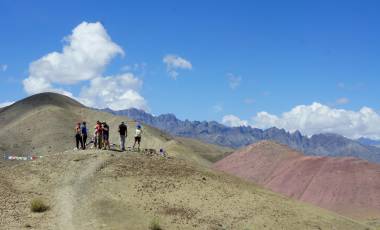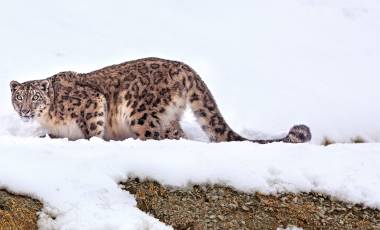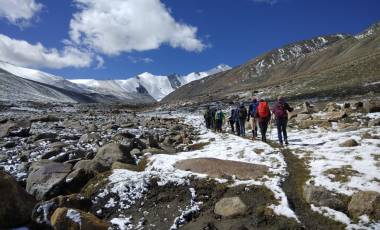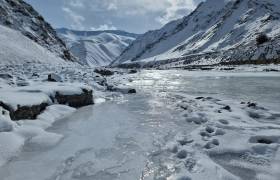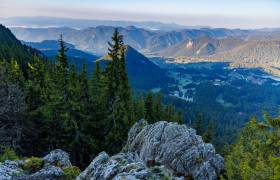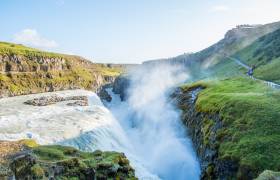Read time – 2 minutes
Ladakh in winter? With sub-zero temperatures and cut off from the rest of the world by the snow?!
Yes – the Hemis National Park is as pretty in winter under snow as it is in summer and is home to one of the most elusive cats on the planet – the Snow Leopard.
In February 2010, Valerie Parkinson led the first Exodus trip in search of this magical animal. The only way into Ladakh in the winter is to fly from Delhi.
As we flew over the snowbound Indian Himalaya we realized just how remote it is. Landing in Leh, the capital, the temperature has dropped from a balmy 18°C in Delhi to a rather colder minus 10°C.
Luckily our hotel has central heating with walls containing four layers of insulation! Leh is at 3,500m so we have to spend a few days getting used to the altitude: cue ‘Gompa stomping’ and bird watching.
At Matho we attend the annual masked dance festival where two monks appear as Oracles to tell the future of Ladakh for the following year. Running around the roof swinging swords, they take our breath away as much as the altitude.
Hemis National Park
Leaving the comforts of our hotel in Leh, we head off into the Hemis National Park for the next six days, where in the frigid cold of the Ladakhi winter, animals descend from the high mountains to the frozen rivers and villages below. Following our wildlife guide, Khenrab, who is never far from his spotting scope, we scan the snowy ridges and hills around us.
In the first hour, Khenrab has spotted a Ladakhi Urial high on the rocky crags above and several Golden Eagles. Our base camp is beside an icy stream under a beautiful starlit sky. In the early morning, as we enjoy a hot cup of tea in our tent, Khenrab is scrambling on the hills around camp searching for footprints.
Our days are spent trekking through snowfields, across frozen rivers and on high ridges around camp. The kitchen boys bring us hot tea and lunch as we sit with our binoculars trained on the snow-covered slopes. Khenrab has the amazing ability to find evidence of the Snow Leopard – and we see footprints and scat almost every day.
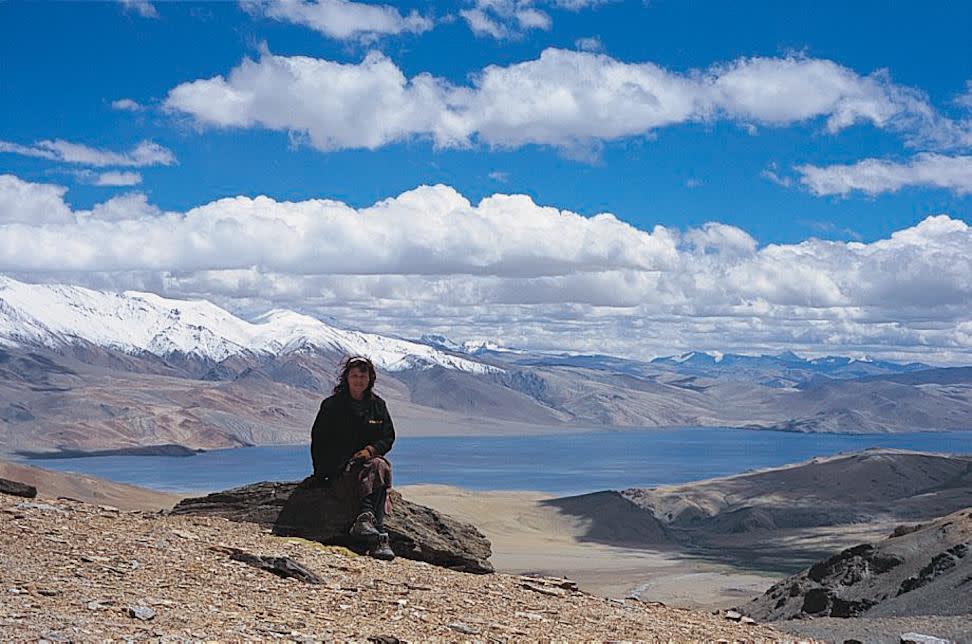 Valerie in Ladakh
Valerie in Ladakh
The Wildlife of Ladakh
The big draw is naturally the very rare Snow Leopard, which we would all love to see, but there is also an abundance of other unique species in the area. Lammergeyers, Golden Eagles and Himalayan Griffin Vultures circle around our camp. Red fox, wolf, Ladaki Urial, Argali sheep and ibex are some of the animals inhabiting the park.
Blue sheep (or Bharal) – neither blue nor a sheep – are the most common animal and we had great sightings every day. We spend five nights camping and have the luxury of a cook and assistants to do all the chores for us – plenty of hot food and drink keep us going during the day – we even get a hot water bottle before bed.
Our last night on the trek is spent in a traditional Ladakhi homestay, an innovative programme to mobilise local people to help preserve the endangered Snow Leopard. From hating the ‘shan’ (the local name for a Snow Leopard), locals have now become protectors of the very animal that had ruined their lives at times by killing their livestock.
Snow Leopard Conservancy
The Snow Leopard Conservancy has helped the locals build leopard-proof pens for their animals and helped them set up homestays so they can generate additional income.
This is a chance to get to know the local culture close up and as we sup the traditional butter tea and try the delicious locally made bread and apricot jam, we have time to slow down and reflect on this beautiful part of the world.
Even though the Snow Leopard remained elusive, this has been an amazing trip in a world that time forgot – Valerie Parkinson, Exodus’ Himalaya Base Manager
Browse trips to Ladakh below and go in search of the snow leopard.
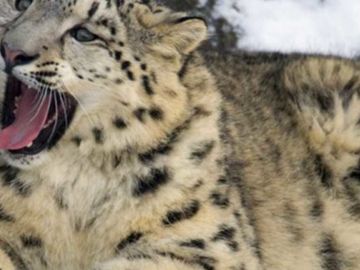
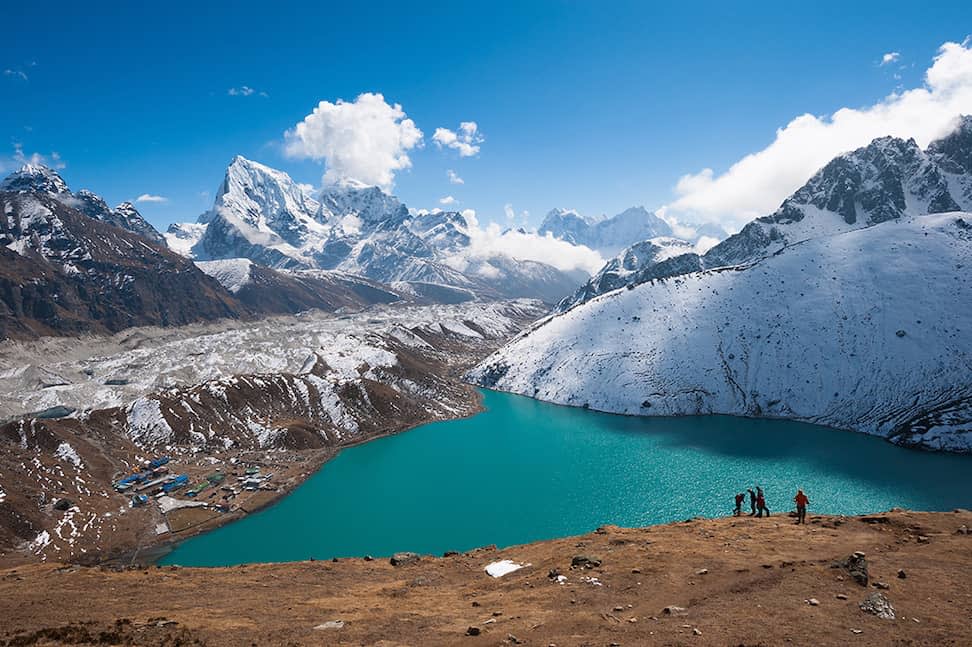 The Himalaya
The Himalaya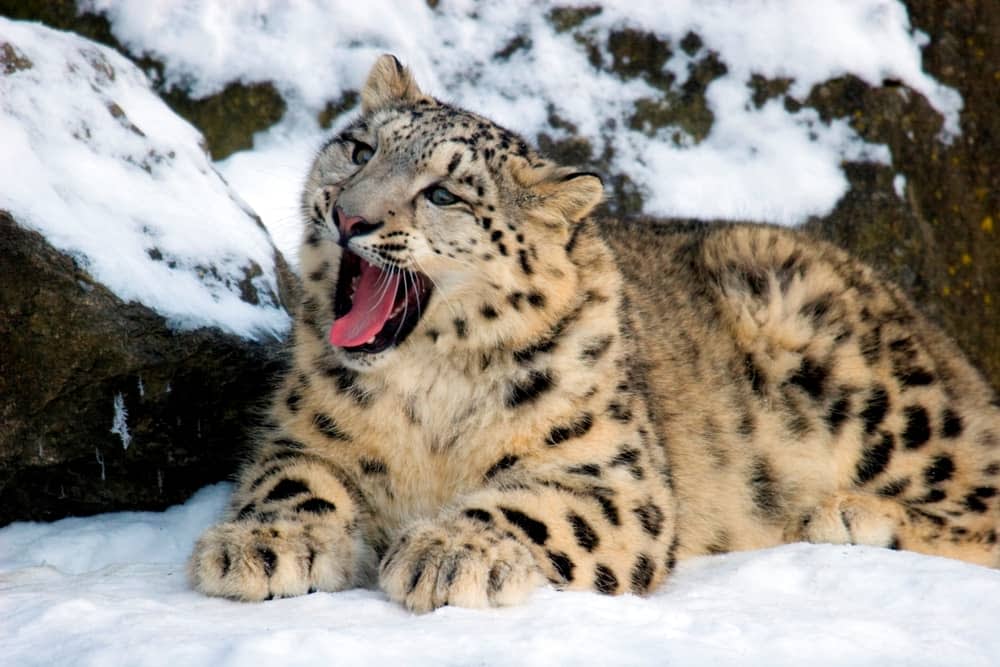 Snow leopard
Snow leopard